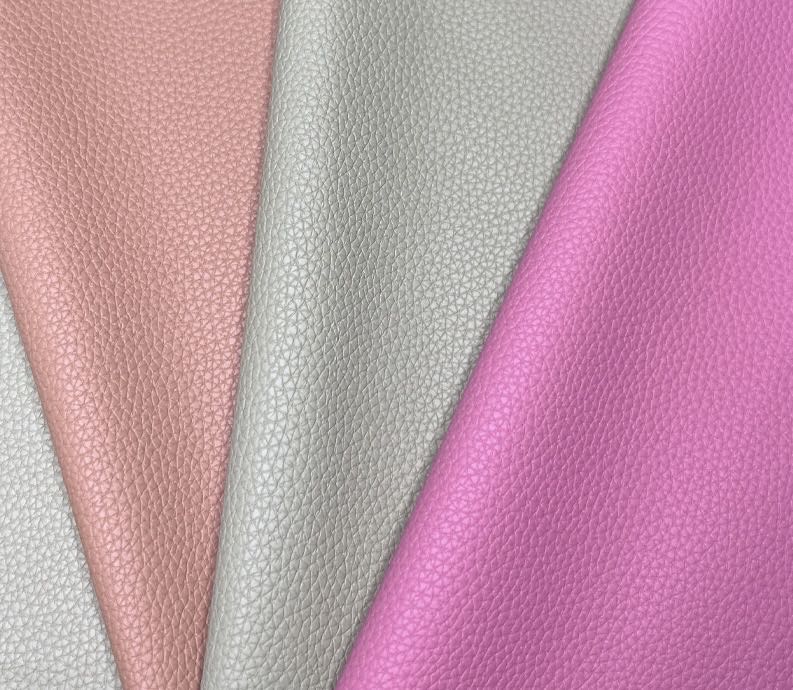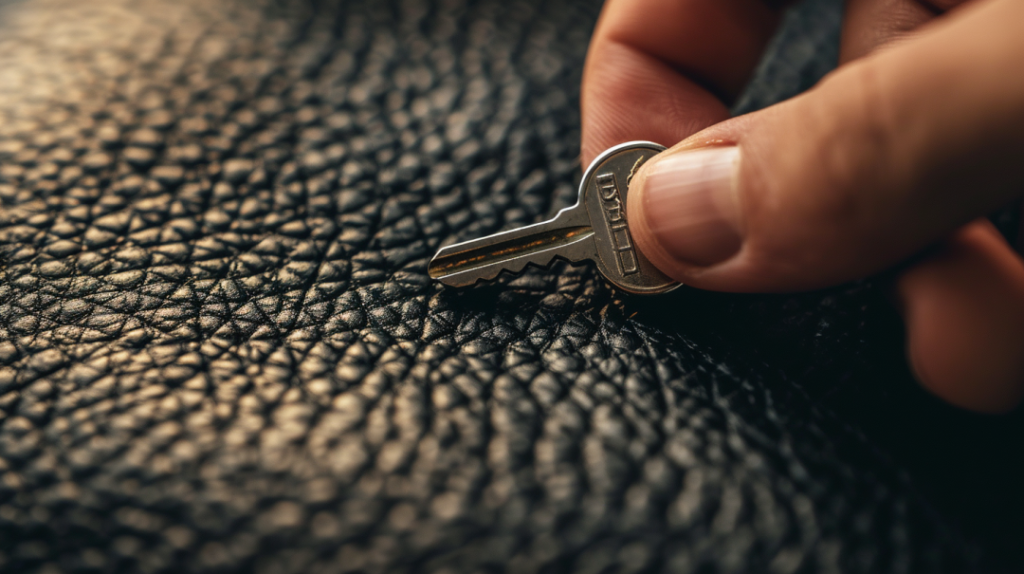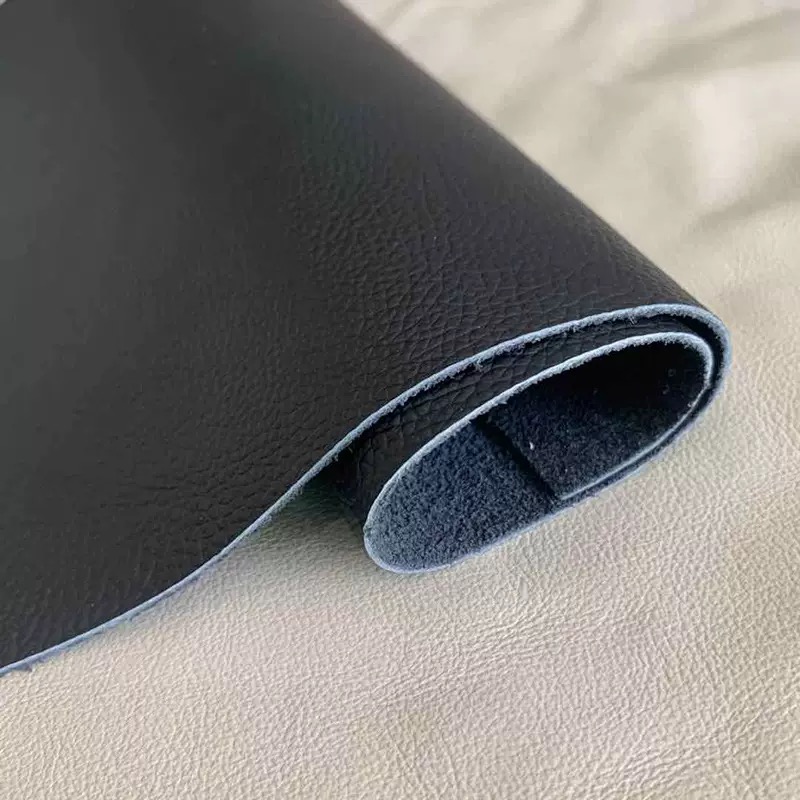What Does Faux Leather Really Mean?
- November 19, 2024
Understanding faux leather is crucial for making informed procurement decisions. Misunderstanding its meaning can lead to incorrect material choices, impacting cost, suitability, and customer satisfaction. This article delves into the definition, composition, advantages, quality, and differences between faux leather and genuine leather.
Faux leather, also known as synthetic leather,artificial leather,is a man-made material designed to replicate the appearance and texture of real leather. Made from PVC or PU, it is affordable, durable, and animal-free.
Today we discuss faux leather in detail. What it means, the materials, advantages, quality, and how it’s different from real leather.
Table of Contents
What Does Faux Leather Mean?

Not knowing what this means could leave you making the wrong choices with what you’re buying on price or suitability. Not knowing what this means could definitely get you in trouble.
Faux leather, also called synthetic leather, is a man-made material designed to look and feel like real leather. It is made from PVC or PU. It is less expensive, durable, and doesn’t involve any animals.
We’d love to tell you all about fake leather. What it is. The materials. The advantages. The quality. And how it’s different from real leather.
What Is Faux Leather Made Out Of?
Not understanding the composition of faux leather can affect your material selection. Incorrect material choices may lead to performance issues not meeting your expectations. It’s essential to clarify the composition and structure of faux leather.
Faux leather is made from PVC or PU combined with stabilizers and plasticizers. It is applied to a fabric base, creating a durable and versatile material. This composition allows faux leather to mimic the look and feel of genuine leather while offering enhanced water resistance and stain resistance. Discover the manufacturing process and understand the role of plasticizers.
What Is Another Name for Faux Leather?
Not knowing the alternative names for faux leather can increase communication costs. Lack of name recognition may affect procurement efficiency. It’s important to be aware of the different terms used in the industry to facilitate smoother communication.
Faux leather is also referred to as synthetic leather, artificial leather, fake leather ,or vegan leather, emphasizing its non-animal origin and eco-friendliness. These alternative names highlight the material’s ethical and sustainable attributes, making it easier to discuss with suppliers and customers alike. Explore alternative names and understand their implications.
Is Faux Leather Good Quality?

So the entire conversation around faux leather – people question it. They may doubt the quality of the product. If you underestimate the quality, you’re probably going to miss some great high cost-performance options. That’s why you need to evaluate the quality of fake leather in different industries.
Faux leather gives you quality, water resistance, durability, and customization. This quality makes it perfect for the furniture industry, the automotive industry, and the fashion industry. Advancements in manufacturing technology have made fake leather look and feel closer to real leather. So, look at the quality of fake leather for each individual industry.
What Are the Advantages of Faux Leather?

Not knowing the advantages of faux leather may cause you to miss the best material option. This could lead to increased costs or choosing materials that don’t meet your needs. Let’s analyze the core advantages of faux leather.
Faux leather is cost-effective, cruelty-free, and customizable, offering excellent water resistance and durability for diverse applications across industries. Its affordability makes it accessible for large-scale production, while its customizability allows for a wide range of colors and textures to meet specific design requirements. Additionally, being animal-free, it appeals to ethical consumers and reduces the environmental impact associated with animal farming. Learn about the advantages and explore sustainability benefits.
How Does Faux Leather Differ from Genuine Leather?

Not understanding the differences between fake leather and real leather could screw up the materials you pick! And the wrong material can have a huge impact on the appropriateness and customer satisfaction of your products. So let’s break down the differences between these two materials.
Fake leather is manmade, cruelty-free, and inexpensive. Real leather is natural, luxurious, and resource-intensive. Fake leather is better for keeping water out, is less expensive, and works for things where you need it to last a long time and not cost an arm and a leg. Real leather is more breathable and has a neat feeling to it. High-end users are excited about it even if it’s harder on the environment. Compare and contrast PVC with real leather and know the benefits of both.
Conclusion
Faux leather is a versatile, affordable, and eco-friendly material with excellent durability and customization options. Its quality makes it ideal for multiple industries. By understanding its meaning, materials, and benefits, you can make informed decisions that align with your business needs and sustainability goals.
Request A Quote for Your Leather Projects!
Share the post now:
You may also find these topics interesting

Top Applications of PVC Leather in Outdoor Furniture: Why Is It the Perfect Choice?
Top Applications of PVC Leather in Outdoor Furniture: Why Is It the Perfect Choice? Choosing the wrong outdoor material means

How to Test the Quality of Artificial Leather Like a Pro?
Learn how to test artificial leather quality like a pro. From abrasion resistance to peel strength, discover the key methods that ensure durability, flexibility, and long-lasting performance.

What Role Does Surface Texture Play in Artificial Leather Design?
Surface texture transforms artificial leather by enhancing aesthetics, feel, and function—key to making products stylish, realistic, and uniquely your own.
